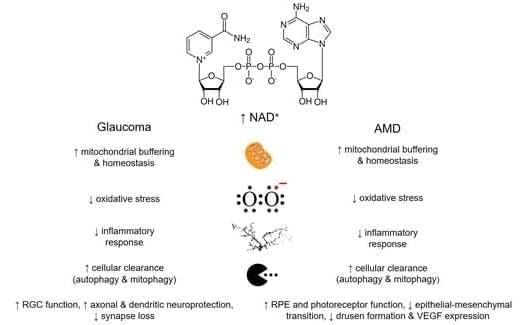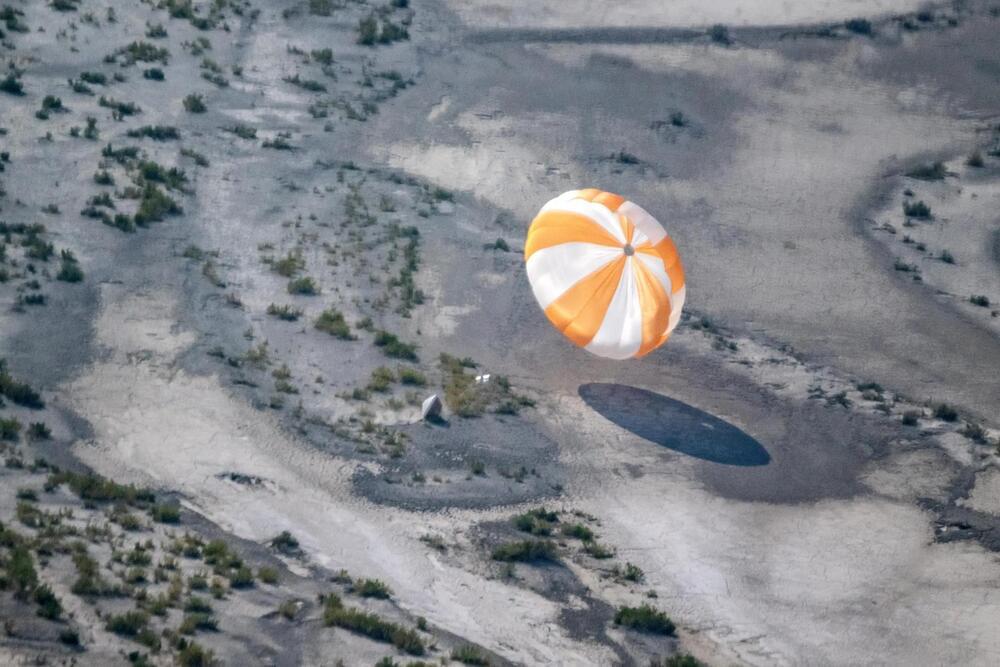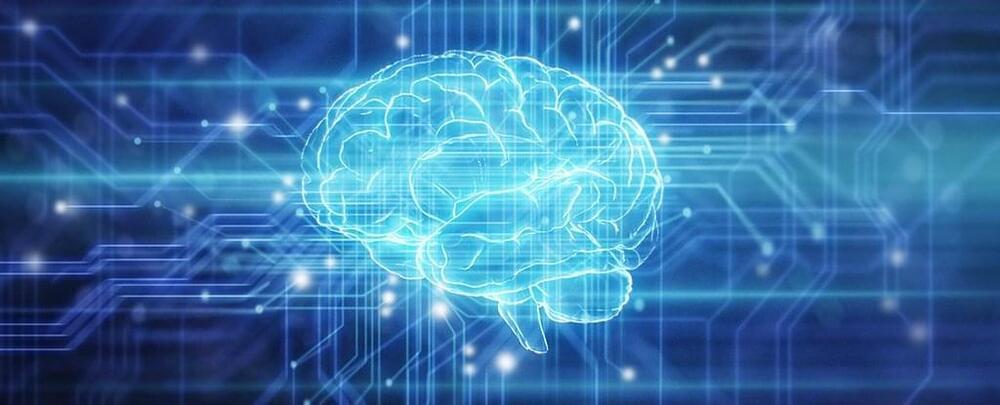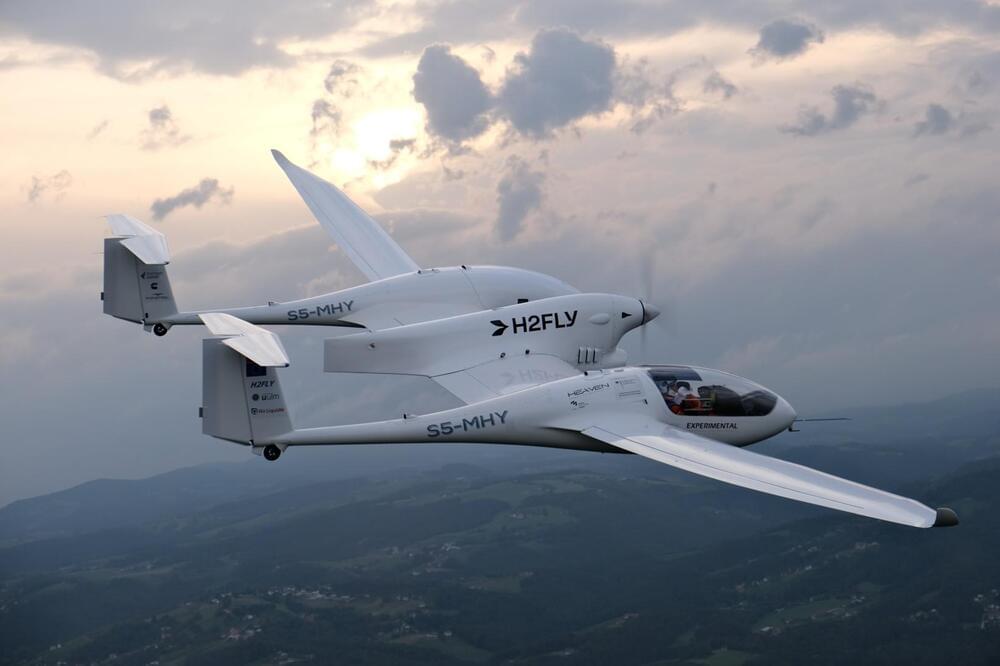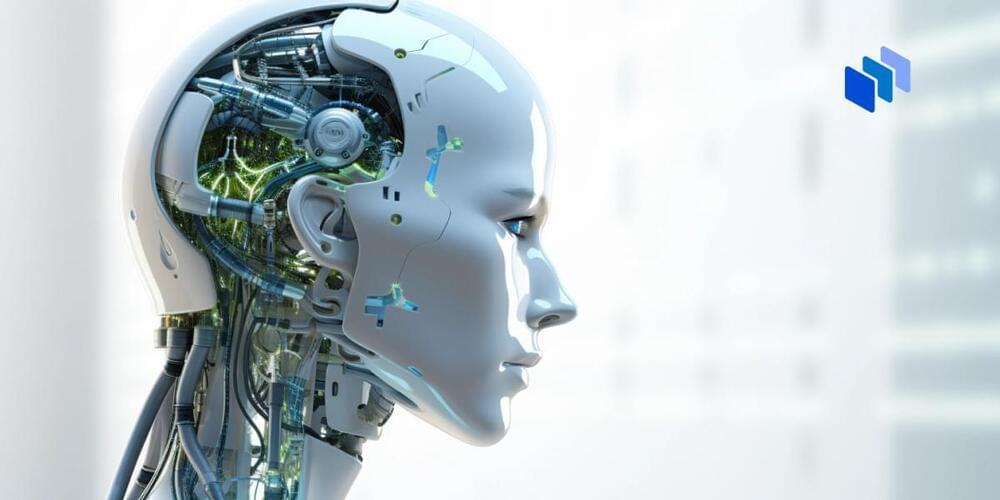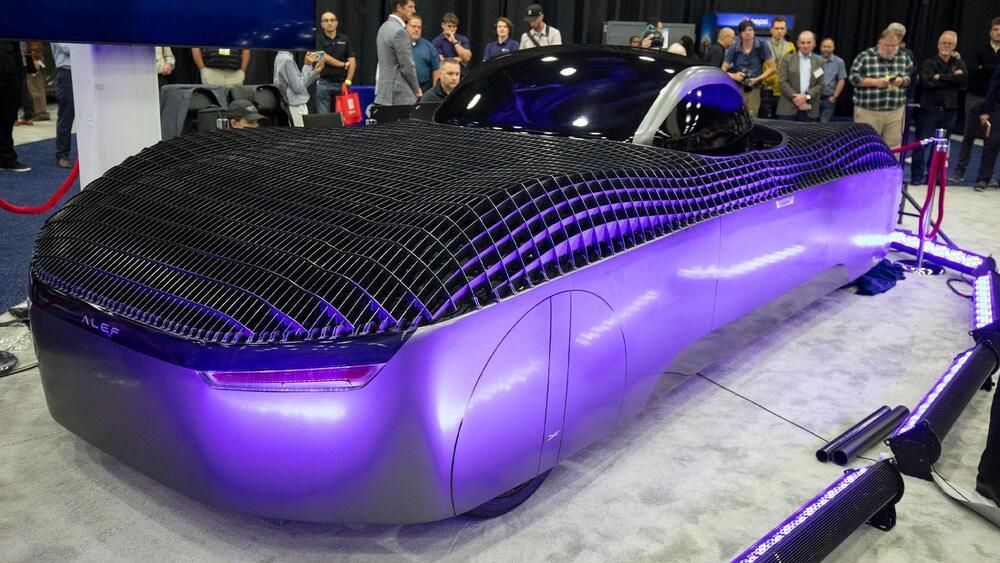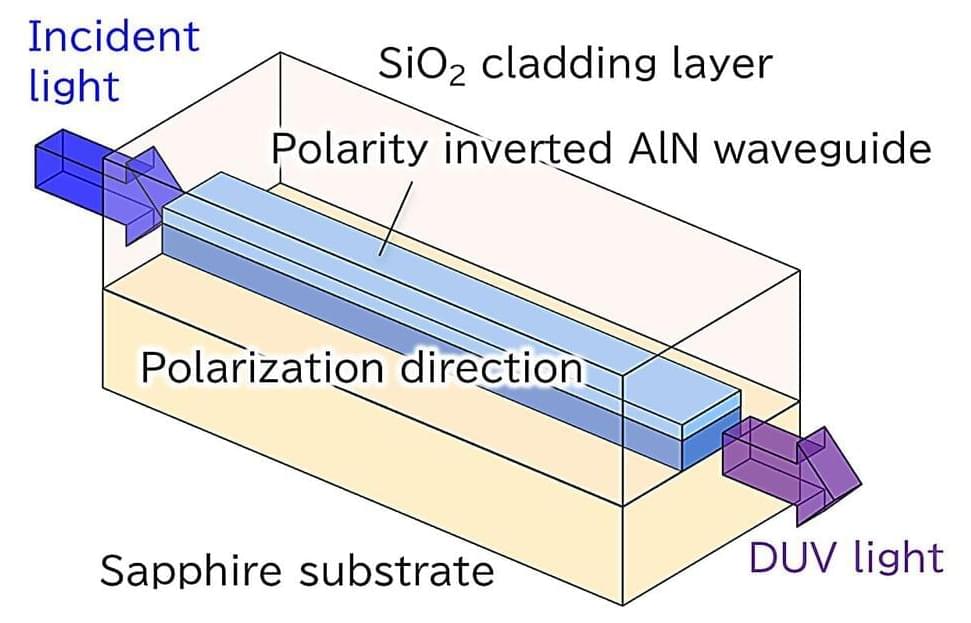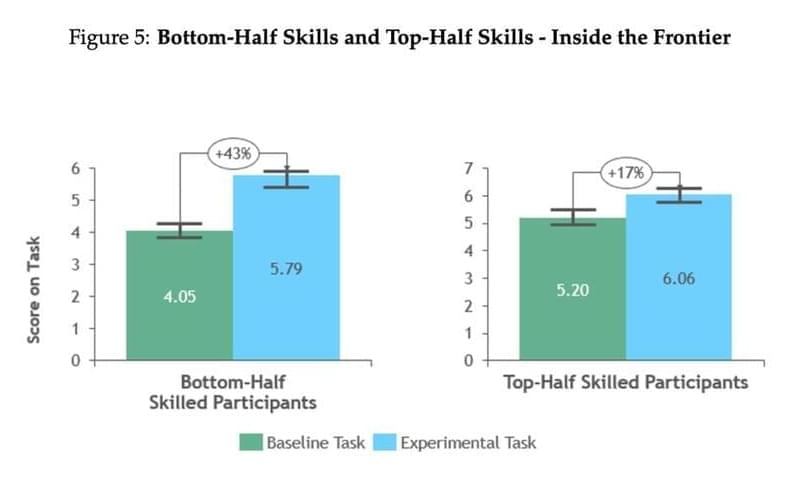Year 2020 Immortality in eyes achieved with Nad plus 😗😁😘.
Glaucoma and age-related macular degeneration are leading causes of irreversible blindness worldwide with significant health and societal burdens. To date, no clinical cures are available and treatments target only the manageable symptoms and risk factors (but do not remediate the underlying pathology of the disease). Both diseases are neurodegenerative in their pathology of the retina and as such many of the events that trigger cell dysfunction, degeneration, and eventual loss are due to mitochondrial dysfunction, inflammation, and oxidative stress. Here, we critically review how a decreased bioavailability of nicotinamide adenine dinucleotide (NAD; a crucial metabolite in healthy and disease states) may underpin many of these aberrant mechanisms. We propose how exogenous sources of NAD may become a therapeutic standard for the treatment of these conditions.
